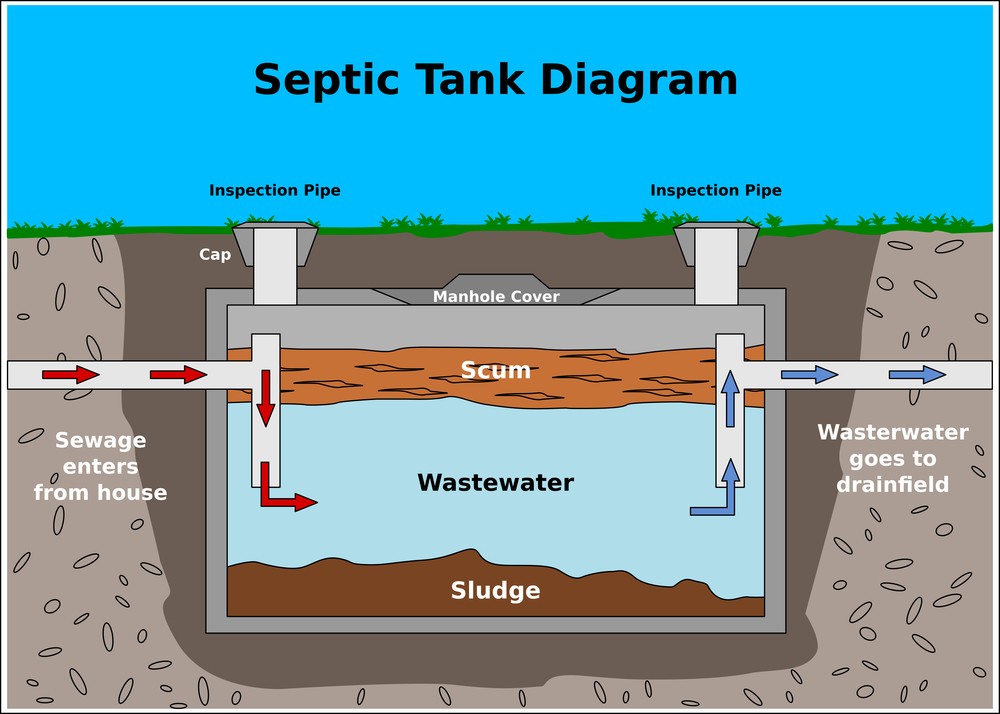One of the most important components in your home is a septic tank. These tanks process and treat wastewater from around the home before sending it down to safely dispose of it underground. These tanks are made from durable, rust-resistant materials like plastic, fiberglass, or concrete.

Due to the filter’s absence of waste, dissolved solids build up inside the tank. Over time, as these substances continue to build up, it becomes trapped and requires significant cleaning to clear. If you’ve got septic or sewage tank problems, drain cleaners like Flush Out Plus can help. They work quickly and properly to scrub the inside of your tank, as well as all the pipes connected to it.
Cleaning a septic tank is often a complicated process that can leave your backyard looking like a war zone. To make the job easier, use the best toilet paper to use for septic tanks to wrap around your fingers and into the toilet bowl while you pour water into the tank.
One of the signs that your septic tank’s system is clogged is that if you pour a bucket of water into it and some dirt comes up. If this happens, here are some quick, easy steps to remove all of the debris.
1. Preparing the Tank
Find the location of your tank by following the sewer pipe beneath your house. When you dig up the top layer, you will find its access port lid if it’s on a corner.
If your tank is cracked or leaking, call a professional to have it fixed. If you notice rust or any damage on the inlet, outlet or anywhere else in your tank, it’s time for a new one.
By using a hose or bucket, you can test whether your septic tank is digging garbage from a clog. If you run water, the clog should be ejected by the force of the back-up pump.
2. Measuring the Scum Depth
Ballparking how deep a septic tank’s scum or sludge is has always been difficult. This can be made easier with an L-shaped PVC pipe, which you can prepare with a 9.5’ and 6” length to join them together as necessary.
Grab a piece of tape and place it over the pipe that lines up with the access lid. Tape it to the pipe, with one end across the top, while you lower the pipe into the tube. Tape one end of the pipe firmly to the side of your barrel. Then, grab each end on top and lower them towards each other until you reach where you want them to stop.
Then, turn the pipe clockwise and push it in deeper, trying to penetrate the scum layer. When the pipe reaches the area that has water, wrap the tape around the pipe that is lined with the lid. Now’s a good time to insert a stop valve sealant.
After you remove the pipe, use a measuring tape and measure the distance between the two tapes. If the distance is equal to or less than 3 inches, you will need to pump the tank.
3. Testing the Sludge Depth
Before you can pump the septic tank, you have to determine its depth first. This can be done by setting up a stick with two pipes joining them together and then attaching a cloth or tape on one end. Push the glued end into the scum line and let it push down until it touches the bottom of the tank. Hold it in place for just a minute or two so that the white cloth is stained enough from scum that it is easy to see. Finally, use a measuring device to measure 6 inches or less of stain for suggestions for pumping.
4. Cleaning the Baffle Filter
It’s important to use protective gloves and pull out the baffle filter before placing it in an outlet pipe. It’s placed inside a pipe that brings waste into the tank and pushes the water out of the tank.
When cleaning the filter, it’s important to ensure that all of the debris is cleaned completely. Use a garden hose and run water through the filter at high pressure to remove all solids before putting it back in place. If liquid enters the tank while this happens, you will have to replace your filter.
Make sure that you put the baffle back on the pipe correctly. Otherwise, it may continue to let waste find its way out of the tank.
5. Pumping the Tank
The final step is to pump the septic tank and this needs to be done yearly. For this step, you’ll need a cast-iron pump with a large suction pipe that goes into the septic tank.
The pump will help clear the tank of all waste, solids, bacteria, sludge and other substances. They’ll be pumped out by a government-approved facility that handles septic waste.
That’s the whole thing you need to do to clean your tank.



